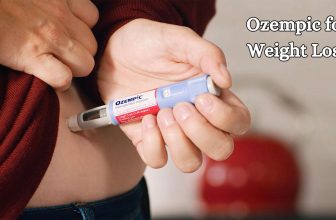How to Regain Muscles after Weight Loss?

We know that getting the ideal figure takes time, but what happens to your skin as you reduce body weight, and how do you get the desired toned physique?
Although your body is incredibly adaptable and can change, it takes more than expected time to catch up. If you’ve dropped a lot of weight quickly, you might still have stubborn loose skin hanging around. Although this is normal, it can significantly impact how you see your own development, and even after substantial weight loss, you might still feel self-conscious about how you look.
Millions of cells make up your skin, which is a living organ. The cells that make skin’s surface on the outside are lost and replaced every day, but because the cells within are more durable, they take longer to regenerate. Skin stretches or contracts as a result of weight loss or growth. By removing the fat that maintains the skin stretched out, you will also temporarily reduce the skin’s suppleness, which could make skin after weight loss appears loose and flabby.” In this article you can learn “How to Regain Muscles After Weight Loss?”
Best 8 tips to gain muscles after weight loss

Photo Credit:robustalive.com
Here are my top 8 suggestions for gaining muscle after losing weight:
- Start your strength training
- Focus on compound motions
- Engage in high-intensity intermittent training (HIIT)
- Includerest days
- Increase calorie consumption
- Consume more protein
- Have some beauty sleep
- Be consistent
Let’s go through each of these suggestions in further depth, so you have a step-by-step action plan to get you started on gaining muscle after weight loss.
1. Start your strength training

Photo Credit:robustalive.com
It’s the perfect time to start including strength training in your program if you haven’t previously.It entails performing an exercise where resistance is applied against you or using dumbbells or kettlebells to load a barbell.
Utilizing the machines at the gym or perhaps just your body weight while there is advantageous (yes, bodyweight exercises can build muscle).
The body’s muscle fibers are broken down with strength training. After that, it will begin to mend on a larger scale. We’ll discuss this further in this post, assuming you follow a healthy diet.
You should also make sure that you’re concentrating on progressive overload to ensure that your strength training is genuinely helpful in helping you gain muscle.
Progressive overload refers to the constant pressure of your body to adjust to higher levels of stress and tension than it was previously exposed to. To continue gaining strength and muscle growth entails lifting larger weights.
2. Focus on compound motions
You may use various forms of strength training, and while they all have their place in fitness, some unquestionably offer the best value.Take complex movements, for instance.
Instead of doing isolation exercises, which only target one muscle group at a time, you are using these motions to engage muscle fibers from multiple locations.
The big three lifts—squats, bench presses, and deadlifts—as well as smaller exercises like the overhead press, pull-ups, and hip thrusts—are examples of compound motions. Compound movements should be your main focus of strength training, with isolated workouts serving as supplemental lifts.
3. Engage in high-intensity intermittent training (HIIT)
Try to concentrate on high-intensity interval training (HIT) if you want to practice cardio, which is terrific for your cardiovascular system.
It indicates that you exercise for a shorter period but with much more intensity. Due to its superior ability to preserve your existing muscle mass, HIIT may be a better kind of cardio than low-intensity steady state cardio (LISS), which involves working out for more extended periods but at a lower intensity.
Make intelligent cardio choices if you want to reduce the chance of muscle catabolism.
4. Include rest days
Less is more is a proverb that applies to exercise as well.
Rest days can help your muscles recover and expand, just as lifting weights is vital.Strength training, as previously discussed, causes the muscle tissues to break down, which in turn drives the process of recovering and rebuilding. However, this cannot occur if you don’t give your body time to relax.
The purpose of rest days is to allow your muscles to finish the recovery process so they can begin to regenerate, which is what you want. As a general guideline, you should wait 48 hours before working out the same muscle group again to give it time to recuperate.
Diet
Your diet is just as vital as your training if you want to gain muscle after losing weight. How quickly you grow muscle and reduce the amount of fat that goes along with it might depend on your diet.
5. Increase calorie consumption
To gain muscle, you must eat since food gives muscles the energy they need to expand. Increasing caloric intake can be a little frightening, especially after weight loss, but it is vital to do so.
However, your goals will determine how much you raise your intake. You can use a smaller caloric surplus to reduce the fat you gain while gaining muscle. However, remember that doing so will result in a long journey toward your objective.
A calorie surplus may be an option if you don’t mind a faster pace of fat gain alongside your muscle gain.
A calorie surplus occurs when your intake of calories exceeds your metabolic rate. This post breaks down how many calories you should consume, including the split of protein, carbohydrates, and fats.
6. Consume more protein
You must unquestionably ensure that you consume enough protein in your daily caloric intake to support continued growth.
Protein is the basic block of muscle growth and repair, so ensuring you’re getting enough is crucial. There is an excellent discussion about how much protein you should eat, but a reasonable general guideline is to get between 10 and 25 percent of your calories from protein.
You can consume more protein than is advised, but keep in mind that eating more won’t speed up building muscle once you’ve reached your goal protein intake.
Lifestyle
Other aspects that affect your ability to put on muscle after reducing weight should also be considered.
7. Have some beauty sleep
The importance of proper sleep in maintaining good health and gaining muscle is sometimes underrated. Without sleeping for at least 7-8 hours each night, it may be difficult for you to maintain a regular schedule and feel good.
Have you ever tried exercising after a restless night? It’s unquestionably less successful than it would have been if you had had some quality rest. Not to add, you’ll likely be grumpy and have less energy during the day. So, to feel better overall, ensure you get your beauty sleep.
8. Be consistent
Every one of the suggestions we’ve discussed is crucial, but in the end, consistency is the key.If you can establish a pattern that you can follow and consistently control your training, diet, and sleep, you’ll get the best results.
If everything seems overwhelming to you, start small by exercising only twice a week, then gradually increase your training frequency once you’ve developed a habit. Starting small and steadily expanding from there will help you reach your objective more quickly than trying to do everything at once every day and then abandoning the effort.
Finding a schedule that works for you is necessary for this. There are many arguments over the benefits of eating three or six meals a day, training in the morning or the evening, and other topics. In the end, what will help you discover your groove and that habit is recognizing what works best and what you’re more likely to keep to.
Therefore, if you have more time and discipline to exercise at night, don’t try to get up early morning to accomplish it. If eating 3 larger meals per day keeps you fuller longer, do so instead of 6 smaller ones. It may involve some trial and error at first, but as you learn what works best for you, it will become ingrained in your routine and second nature. Consistency is essential; keep in mind.
End words by the writer
The essential thing is that you feel confident in yourself; beauty is not just on the outside. Even if none of those above methods work for you, you should still be happy with the body for which you have worked so hard to build. Loose skin is a regular thing. Be proud of your shape and consider your stretch marks or sagging skin reminders of how far you’ve gone.
Frequently Asked Questions(FAQ’s)How to regain Muscles after weight loss?
Is it simple to regain muscle mass after a loss?
The phenomenon of muscle fibers recovering size and strength more quickly than when they first gained them is known as muscle memory. It means regaining lost strength and muscle is considerably simpler than building new strength and power from scratch.
How long does it take to regain muscles after weight loss?
Depending on how to fit you are to start, it might take two weeks or happen more gradually over a few months. Because runners’ muscles atrophy more slowly than weightlifters and other bulkier people, the process is typically slower for them.
What foods are beneficial for gaining muscle?
Foods that help build muscle for lean muscle growth:
- Eggs: High-quality protein, good fats, and additional vital elements, including choline and B vitamins, are all present in eggs
- Salmon is a fantastic option for maintaining general health and increasing muscle.
- Chicken breast
- Greek yogurt
- Tuna
- Tender meat
- Shrimp
What causes a sudden muscle loss?
Muscle atrophy can occour by a lack of exercise brought on by an illness or injury, lousy diet, heredity, and specific medical problems. Long durations of idleness can cause muscle atrophy. A muscle that is not used will eventually be broken down by the body to save energy.
References
https://fitbod.me/blog/build-muscle-after-weight-loss/
https://www.insider.com/how-to-tone-up-after-losing-weight-without-gaining-fat-2020-11
https://www.fitnessfirst.co.uk/blog/12-steps-to-tone-up-after-weight-loss
https://woman.thenest.com/rebuild-muscle-after-wasting-away-18525.html
https://livehealthy.chron.com/build-muscle-after-weight-loss-4822.html





